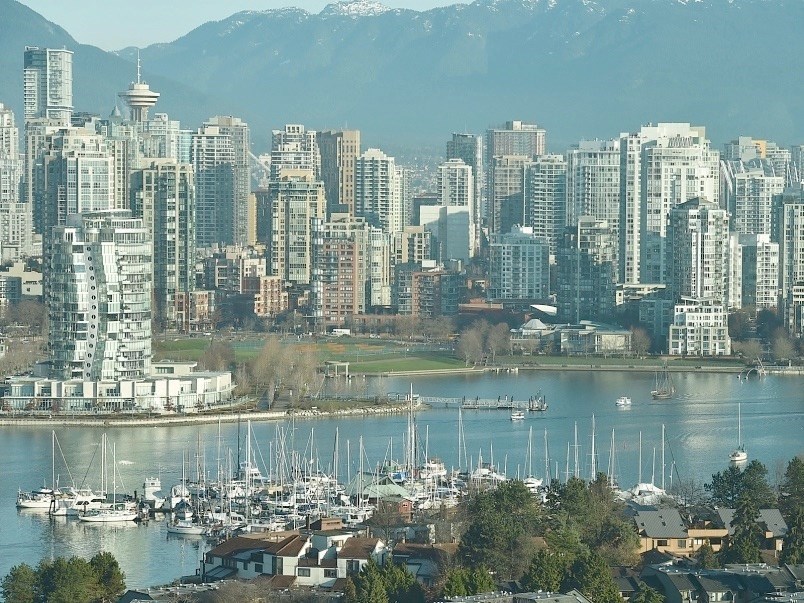The Vancouver Plan.
It has been described as bold, ambitious and aspirational.
For more than three years, city staff have worked on developing what they’ve described as a visionary long-range plan to guide growth and change in Vancouver to the year 2050 and beyond.
Now it’s almost ready to go before city council for approval.
That will happen in June.
Before that, the city wants to hear from the public on what they like and don’t like about the draft version of the plan, which is now available for viewing on the city’s website.
Expect more housing — including towers — to be built around transit. Expect more social and rental housing in all neighbourhoods. Expect more housing in shopping areas and in low-density residential areas.
Adding job space to neighbourhoods and building out the city in such a way that 90 per cent of people can live within an easy walk or roll to access their daily needs is included in the plan.
So is adapting the city for climate change and enhancing residents’ connection to nature — all of these goals central to the plan’s vision to make Vancouver more livable, affordable and sustainable while strengthening the economy.
The city’s chief planner Theresa O’Donnell and Karis Hiebert, the city’s project manager of the plan, delivered a presentation to media Tuesday and answered questions to launch what is the fourth phase of the Vancouver Plan’s development.
Below is a condensed and edited version of some of their comments regarding a document that was initiated by the current 11-member city council soon after they were elected in October 2018.
Why is a Vancouver Plan necessary?
The city currently has an assortment — or patchwork, as O’Donnell described it — of plans and policies. There is the Grandview-Woodland plan, for example. There are 14 official development plans across the city, including in Shaughnessy. On top of that are “vision plans” for Kensington-Cedar Cottage and other neighbourhoods.
Then add various zoning policies and programs such as Rental 100 and the Moderate Income Rental Housing Program and O’Donnell has frankly lost count of how many policies exist related to housing and development.
“So right now, people, businesses, developers have to wade through all these different levels of plans to figure out which ones actually apply, which ones may have applied in the 80s, but they're outdated, they haven't been repealed, which one's been conflicted or compete with other plans,” she said. “So this is kind of the first attempt at straightening that out.”
How specific or granular is the plan, and can a resident find out what could potentially happen to their neighbourhood, or even their street?
“What this plan will start to show people is kind of the scale and scope, but a person won't be able to go to a map and locate their house or their piece of property and say, ‘Oh, I'm going to get 42 feet in height and 1.2 [floor space ratio],’” O’Donnell said. “This sets the broad strokes for the city.”
Added Hiebert: “The whole city is not going to change at once. There may be some areas of the city that are more ready for change, and able to advance some of the big ideas of the plan. So those are the sorts of things that we'd be looking at in the next phase of work.”
What does the plan not do?
“This draft plan does not enable rezoning or development applications,” Hiebert said. “It does not provide specific guidance about a resident’s home. It doesn't provide specific guidance about where to address potholes in the streets. It does not supersede policy initiatives such as Housing Vancouver, Resilient Vancouver or the climate emergency action plan.”
The plan contemplates increased density in neighbourhoods, including single-family-home areas that have largely avoided change. Does the city expect pushback from residents?
“Change is always hard, and I think current residents understand the affordability challenges, whether you're lucky enough to have gotten a home 10 to 15 to 20 years ago, or not,” O’Donnell said. “Some folks are very concerned about whether or not their kids or their grandkids will be able to afford a home and stay in Vancouver. So it's a challenge for all of us in the community about how we grow, how we become more equitable, how we make room for future generations. So while there's always a fear of change, and a reluctance to see that beautiful house down the street get replaced with townhomes, I think there's a very basic fundamental understanding that Vancouver is not affordable to most folks. If you're not on the housing ladder now, it's very, very difficult to reach that first rung.”
How much has the plan cost to this point?
Hiebert said the overall budget is $11 million, with city having spent between $7 million to $9 million of it. Previous work has included workshops and public engagement sessions across the city.
How can residents weigh in on the draft version of the plan before it goes to council in June?
Visit the Vancouver Plan Get Involved web page. A survey is available in English, Traditional Chinese, Simplified Chinese, Punjabi, Vietnamese, Tagalog, Spanish and French.
@Howellings



